Egypt
Pharaohs, pyramids, hieroglyphics, temples and the Nile River…all are things that I remember learning about in school as a child, but this week, Perry and I had the opportunity to experience them in person. From Kenya, we traveled north to one of the most ancient civilizations on the planet. Egypt really is full of as much history as you might imagine it to have. I remember being fascinated by it as a child, but seeing something like the Great Pyramids of Giza before your eyes is truly incredible.
There are three spans of history that ancient Egypt is split into: the New Kingdom (around 1550-1070 BC), the Middle Kingdom (around 2055-1550 BC) and the Old Kingdom (around 2685-2180 BC). Just think: the Old Kingdom dates back almost 5000 YEARS from today. It kind of blows my mind. Most of what we saw this week is from the Old and New Kingdoms. Throughout each kingdom, the capital city of the country changed around: Memphis (close to Cairo): Old; Thebes: Middle; and Luxor: New. No matter where the capital was though, life revolved around the country’s life source: the Nile River.
One of our tour guides pointed out that without the Nile River, there would be no Egypt, and throughout our time there, we began to see why. Egypt truly is a desert. Only because of the Nile is there water to drink and fertile soil for crops. Without these things, there is really no reason for people to live here. And for this reason, ancient Egyptians lived along the water’s shores and built their temples and lives there.
So what better way to start our time in Egypt than on this important river. We boarded a three night Nile River cruise in Aswan and headed north on the Nile very slowly towards Luxor. Our boat was the Iberotel Crown Empress, and it was pretty nice with staff that are kind and helpful. We booked the cruise through a tour company and had our own private guide named Motaz. He is an Egyptologist with multiple Masters degrees in ancient civilizations and Egyptian history…a pretty impressive and smart guy (he also had a great sense of humor and kept the history super interesting). He was with us throughout the cruise and would visit the temples with us as the boat stopped along the Nile.
From the airport in Aswan and before boarding our boat, we began our adventure with our first stop at the Aswan High Dam. Honestly, Perry and I had never heard of this before, but for Egyptians (and even engineers outside of Egypt), it’s a huge deal. Every year, up until this dam was built, the Nile River would flood as a result of rains making their way over from Ethiopia. This was always a huge problem for Egypt as it would make it difficult to settle very close to the river unless you were on high ground. In the 1960s, Egypt decided to do something about it and built this dam in order to prevent the flooding from happening. At the time it was built, it created the largest artificial lake in the world: Nasser Lake. It also helped generate electricity for over 40% of the country- something that was a huge deal for people who were experiencing daily power outrages. So needless to say, Egypt is very proud of their Aswan High Dam, and it’s easy to see why :) The only downside of the High Dam, in our opinion, is that it altered the ecosystem along the Nile, and so you can’t find Nile crocodiles in the Nile River north of the dam any longer. This probably isn’t bad news for the people and animals living along the River, but for us, we were a little bummed :)
From the High Dam, we traveled to our first temple of the week: the Philae Temple. This temple dates back to the Greco-Roman times around the 6th Century BC. It is located on an island in the middle of a water reservoir. To get there, you have to take a boat, which was pretty interesting. The temple itself is quite impressive and a sight to behold. You can imagine Perry’s and my faces as we walked up to this temple with our jaws dropped at it’s size and beauty. As with all of the temples, it is filled with amazing carvings of ancient Egyptian gods, goddesses and kings as well as hieroglyphics all over the walls. As you’ll start to see in most of our pictures, each temple had three parts: the open court where the general public could go, the inner temple where the priests and nobles could go, and the “Holy of Holies” where only the High Priest and King could go to offer sacrifices to the gods. The Philae Temple had each of these, and they were all quite impressive to see, especially because of the size.
Our second day, we visited the Kom Ombo Temple at night. This temple too is pretty amazing because of its enormity and beauty. We literally stopped on the side of the Nile and walked up a hill to get to it. We didn’t arrive until after the sunset which made for a pretty cool view. We learned that Kom Ombo dates back to the Ptolemaic Dynasty between 180 to 47 BC. The pictures of the hieroglyphs and carvings really cannot do the amazing details justice. Another interesting part of Kom Ombo is that they have a small Crocodile Museum that you can visit as well to see mummified crocodiles. In ancient Egyptian society, crocodiles were seen as reincarnated forms of the crocodile-headed god, Sobek. For this reason, they would often worship a crocodile and then mummify and bury it when it died. Outside of Kom Ombo, they found a burial ground with crocodile mummies buried in it that they have now excavated and placed in this museum. It was crazy to see. Also, they were HUGE. So maybe it’s not a bad thing that they aren’t swimming freely in the Nile anymore…
The next morning, we got up early (before sunrise) to visit the Edfu Temple. It’s funny because as we went along, we would comment to Motaz about how big each temple was, and he would laugh and say, “This is one of the smaller ones. They only get bigger and bigger at each stop.” We kind of believed him, but we also probably had some doubts. But it was true. As you’ll see with our pictures, each temple just got bigger. And Edfu was no exception. It dates back to around the 3rd Century BC and was created for the gods, Horus, Hathor, and Harsomtus. The detailed work outside and inside the temple is amazing.
After cruising from Edfu, we arrived in Luxor the next morning and departed the ship to begin a day full of temples and ruins. As I mentioned before, Luxor was the capital city of the New Kingdom and it has some truly incredible sites to visit.
Motaz first took us to the Temple of Hatshepsut. In Egyptian history, she is probably the most powerful of all women, and she’s pretty impressive if you ask me. When her husband (who was the current king of Egypt) died, she took over as queen and ruler and sent her step-son off to military training so he couldn’t become the next king. As queen, she was strong and successful, and according to Motaz, Egypt was a powerful and thriving empire during her rule. Her temple is so interesting and was excavated in the 1890s after it was found under about 40 meters of sand. It was originally built in the 15th Century BC, making it over 3500 years old! What is so unique about this temple is that it is completely built into the mountainside, and it is the only temple to be three stories tall. Very impressive temple for a very impressive woman…
Following Hatshepsut’s Temple, we traveled to the other side of the mountain to the Valley of the Kings. This area is the burial grounds for approximately 60 kings from the New Kingdom. Each tomb is made up of a series of underground tunnels that lead to a large burial chamber where the king’s sarcophagus, coffin and mummy where placed as well as any of his earthly possessions that he might need in the afterlife. Some famous tombs that are here include Ramses II, Hatshepsut and Tutankhamen (“King Tut”). Unfortunately most of the tombs have suffered greatly at the hands of grave robbers over the years, but many of them still have amazing carvings and original paint on the walls decorating them. The only tomb that was not raided was King Tut’s because of its hidden location, but it was discovered in 1922 by a British archaeologist. Interestingly enough, it is so important not because King Tut was a special ruler, but because it allowed archeologists to see what an intact tomb really looked like.
Our ticket allowed us to visit three of the tombs. Each of them is so unique and beautiful. And they were all much larger and had more tunnels and rooms than I expected them to.
The first tomb we entered was Ramses III who ruled from 1186 to 1155 BC.
The second tomb we visited was Ramses IX who was part of the 20th Dynasty and ruled from 1129 to 1111 BC.
And the final tomb we walked through was for King Ramses IV. He was also part of the 20th Dynasty and led Egypt from 1155 to 1149 BC.
After Valley of the Kings, we traveled to Luxor Temple. As Motaz promised, the temples just got bigger and bigger, and Luxor was quite large. It was constructed around 1400 BC. The entrance to the temple used to have two giant obelisks. One still remains and the other is located in Place de la Concorde in Paris (France). We learned repeatedly throughout our time in Egypt that so many of Egypt’s artifacts have been taken (stolen) by foreign countries and placed in their museums around the world. Unfortunately this is very true for many of the obelisks as fewer than half of them remain in Egypt today and the rest are scattered throughout the world. But aside from the obelisks, Luxor Temple is made up of huge columns and rooms made of sandstone. There are tons of statues of Rameses II throughout it as well. There is also a small room that Alexander the Great had created for himself when he ruled Egypt. The temple was beautiful and really interesting to explore.
Our last stop of the day was at Karnak Temple. This was definitely the largest and most impressive of the temples that we visited. It is Motaz’s favorite temple, and we could understand why. Karnak is a complex of different temples that over 30 different kings contributed to building starting during the Middle Kingdom rule of Senusret I (around 2000 BC) all the way to the Ptolemaic Period (305-30 BC). It is the largest religious complex in the world and covers about 200 acres of land. Crazy, right?? The most impressive of the rooms is the Hypostyle Hall that is 54,000 sq. ft. and has 134 columns. Like I said, it’s massive and absolutely full of history!
From Karnak Temple, Motaz took us to the Luxor Airport where we said goodbye and caught a flight to Cairo for the remainder of our time in Egypt.
Cairo is definitely quite different from Luxor and Aswan in the south. As the capital city of Egypt, Cairo is full of ancient history as well as modern history. The city is honestly pretty dirty and full of traffic and chaos, but at the same time, it’s so peaceful when you look out on the Nile as it flows through it. Our hotel room overlooked the Nile, and each morning and evening, we loved looking out on the city especially at sunset where we could often see the Pyramids of Giza as well as the Step Pyramid in the distance.
Our first day in Cairo, we did a tour of the Pyramids of the Old Kingdom throughout the city. We started first with the most famous of them all: the Pyramids of Giza. These pyramids were built as burial chambers during the Old Kingdom with the largest being built during the 4th dynasty around 2580-2560 BC. The three pyramids on the Giza complex are for three different kings: the father, the son and the grandson. We decided to climb inside the Great Pyramid to the burial chamber. It was an adventure with parts of the tunnels being quite steep and narrow, but it is a once-in-a-lifetime opportunity, right? Really the inside burial chamber wasn’t too exciting as it’s just a large granite room with an empty sarcophagus inside, nothing like the beautifully decorated Valley of the Kings’ tombs, but it’s still neat to be able to say we did it.
Our tour also included a short camel ride across the desert sand…it was such a touristy thing to do, but it was still kind of fun :) We also saw the Sphinx which was built around 2500 BC for the king of the second pyramid and son of the first builder.
Interestingly enough, there are actually about eighty known pyramids around Egypt. Each was used as a burial ground for the deceased, but only some were for the kings and still survive today. Obviously the Pyramids of Giza are the most famous, but there are some others in areas outside of Cairo that are honestly just as interesting. The first that we visited were the Red Pyramid and Bent Pyramid located in Dahshur. They were both so neat to see as they are a little more secluded and look different from the ones in Giza.
Both were built for King Snefru who ruled Egypt around 2600 BC. You can see the difference in the two pyramids by their color and design. The Red Pyramid has a reddish color to it in the sunlight but has a more traditional pyramid shape. And the Bent Pyramid was given its name because about halfway up the pitch of the slope changes slightly giving it a “bent” look. We decided to enter and climb the Red Pyramid, and it actually made the Great Pyramid look like a breeze. We had to climb down a very steep slope while bent over the whole time. The ultimate interior was so interesting though with a stair step-like vaulted ceiling. Our legs were pretty sore the next day but it was worth it :)
The last pyramid that we visited was the Step Pyramid of Saqqara. Located outside of Cairo as well, the Step Pyramid has more of a stair-step like appearance. It is the oldest of the existing Egyptian pyramids having been built during the 3rd Dynasty for King Imhotep around 2667-2648 BC…yes that makes it almost 5000 years old! It is pretty unique because of its shape but also because it was built within a complex that was surrounded by a wall and has several small temples within it.
After learning so much about ancient Egypt, we decided to take a day and learn some about the more modern era of the country. Because of its location, Egypt is full of modern history as well especially because of it’s religious influence in the world. About 90 % of Egyptians are Muslim, about 10% are Christian (most of them belong to the Coptic Orthodox Church) and the leftover few are Jewish, Hindu or something else. Christianity has been in Egypt since the early days in the 1st century AD, and in the 7th Century, Islam arrived as well. For this reason there are many old and beautiful mosques and churches to see within the city.
Our final day in Cairo, we visited the Egyptian Museum, and we were so glad that we did as it really brought together all that we had learned and seen throughout our time there. It was full of amazing artifacts. This museum has been open for over 100 years, but Egypt is actually building a new museum that will be the largest archeological museum in the world. While they are finishing construction, the old museum has remained open, and is still quite impressive. It has statues, sarcophaguses, pottery, jewelry, and even actual MUMMIES within it. There is an entire room full of kings’ and queens’ mummies with the oldest being from almost 3600 years ago. We couldn’t take any photos inside this room, but trust me when I say it was nuts. Like they still had skin and teeth and hair and nails…unbelievable.
The museum also has most of the items found within King Tut’s tomb, including his beautiful burial mask. It was so cool to see it in person and realize that we were looking at one of the most important and famous artifacts in the world! Unfortunately you can’t take pictures of it so you all will just have to go see it for yourself :) we were able to see many of the items found within his tomb though like his throne chair, statues and the sarcophagus.
From the Egyptian Museum, we visited a huge bazaar called Khan el-Khalili. Parts of this are a huge tourist destination, but we walked the busy streets from the museum and were able to see what life is like for many of the locals as they scurried to and fro purchasing everything from food to electronics to clothing to even lighting for their houses. It was chaotic and crazy, and I loved every minute of it.
Our time in Egypt was an amazing adventure. We saw history come to life in ways that we never thought we’d have the opportunity to see. It was truly unbelievable. Egypt is an interesting country. It was once on top as one of the most advanced civilizations in the ancient world. As we heard stories of Egyptian history, over and over again, we were amazed by the innovativeness of the pharaohs and people of the country thousands of years ago. Egypt is also interesting because unfortunately in some ways, this top of the world land has diminished over time. Modern Egypt has struggled economically and politically with a political revolution even taking place as recently as 2011.
While we were in Egypt, the U.S. State of the Union Address took place. As most of us know, both President Trump and Speaker of the House Nancy Pelosi don’t exactly like each other and showed it during the speech with him refusing to shake her hand and her tearing up his speech. We were discussing this one day with one of our tour guides, and I made the comment that these moves just show how divided the U.S. has become over the years, but our tour guide framed it to me differently. He said that so many in the world are amazed by these moves and see them as a sign of what true democracy looks like. He pointed out that in many parts of the world, if someone was to defy their president or any leader, they could be imprisoned or killed. But in the U.S., that’s not the case. We may not be perfect at it, but compared to many in the world, we have the ability to disagree and not see eye-to-eye with someone, even our president or speaker of the house, and that’s okay. That’s what democracy is all about.
As I pondered our guide’s words, I couldn’t help but be thankful for the freedoms that I have as an American. Yes, I definitely take them for granted. And yes, I definitely complain and am annoyed by most of the politics of our country. But even at the root of politics that make my head spin and make me want to pull my hair out, I’m grateful. I’m grateful that I can complain and be annoyed and most of all, I’m grateful for democracy that brings with it those freedoms that so many in this world do not get to enjoy.
So for today, I’m finding gratitude for my American freedoms and liberties. I’m saddened for those that are silenced daily and cannot speak up for what they need and want. And I’m praying for a world where all people have the chance to refuse a handshake or tear up a speech if that’s what they need to do. May we all be grateful for what we have and may our world find a way to experience true freedom and democracy.





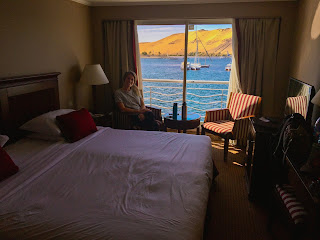



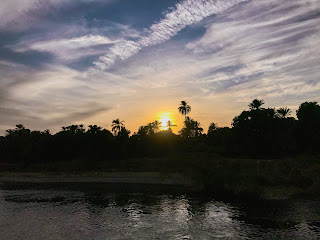
















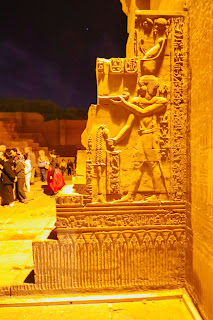
































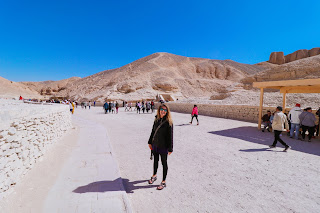




































































































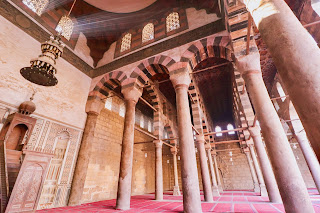

























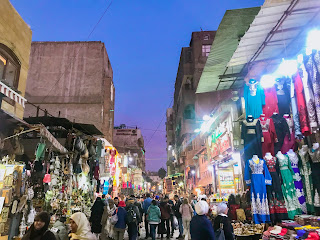



I wanted to thank you for this excellent read!! I definitely loved every little bit of it. I have you bookmarked your site to check out the new stuff you post. Best Egypt Tours
ReplyDelete